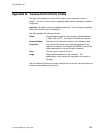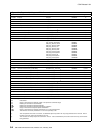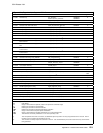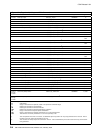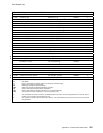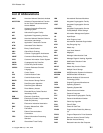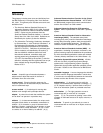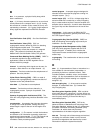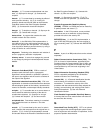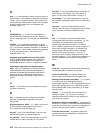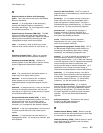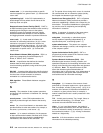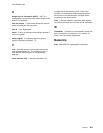
CCA Release 2.54
Glossary
This glossary includes some terms and definitions from
the IBM Dictionary of Computing, New York: McGraw
Hill, 1994. This glossary also includes some terms and
definitions from:
The American National Standard Dictionary for
Information Systems, ANSI X3.172-1990, copyright
1990 by the American National Standards Institute
(ANSI). Copies may be purchased from the
American National Standards Institute, 11 West 42
Street, New York, New York 10036. Definitions are
identified by the symbol (A) after the definition.
The Information Technology Vocabulary, developed
by Subcommittee 1, Joint Technical Committee 1, of
the International Organization for Standardization
and the International Electrotechnical Commission
(ISO/IEC JTC1/SC1). Definitions of published parts
of this vocabulary are identified by the symbol (I)
after the definition; definitions taken from draft
international standards, committee drafts, and
working papers being developed by ISO/IEC
JTC1/SC1 are identified by the symbol (T) after the
definition, indicating that final agreement has not yet
been reached among the participating National
Bodies of SC1.
A
access. A specific type of interaction between a
subject and an object that results in the flow of
information from one to the other.
access control. Ensuring that the resources of a
computer system can be accessed only by authorized
users in authorized ways.
access method. (1) A technique for moving data
between main storage and input/output devices.
adapter. A printed circuit card that modifies the system
unit to allow it to operate in a particular way.
address. (1) In data communication, the unique code
assigned to each device or workstation connected to a
network. (2) A character or group of characters that
identifies a register, a particular part of storage, or some
other data source or data destination. (A) (3) To refer
to a device or an item of data by its address. (A) (I)
Advanced Communications Function for the Virtual
Telecommunications Access Method. ACF/VTAM is
an IBM-licensed program that controls communication
and the flow of data in an SNA network.
Advanced Interactive Executive (AIX) operating
system. IBM’s implementation of the UNIX
**
operating
system.
American National Standard Code for Information
Interchange (ASCII). The standard code (8 bits
including parity a bit), used for information interchange
among data processing systems, data communication
systems, and associated equipment. The ASCII set
consists of control characters and graphic characters.
American National Standards Institute (ANSI). An
organization, consisting of producers, consumers, and
general interest groups that establishes the procedures
by which accredited organizations create and maintain
voluntary industry standards in the United States. (A)
Application System/400 system (AS/400). AS/400
was one of a family of general purpose midrange
systems with a single operating system, Operating
System/400, that provides application portability across
all models. AS/400 is now referred to as IBM eServer
iSeries.
assembler language. A source language that includes
symbolic machine language statements in which there
is a one-to-one correspondence between the instruction
formats and the data formats of the computer.
authentication. (1) A process used to verify the
integrity of transmitted data, especially a message. (T)
(2) In computer security, a process used to verify the
user of an information system or protected resources.
authorization. (1) The right granted to a user to
communicate with or make use of a computer
system. (T) (2) The process of granting a user either
complete or restricted access to an object, resource, or
function.
authorize. To permit or give authority to a user to
communicate with or make use of an object, resource,
or function.
**
UNIX is a trademark of UNIX Systems Laboratories, Incorporated.
Copyright IBM Corp. 1997, 2005
X-3



